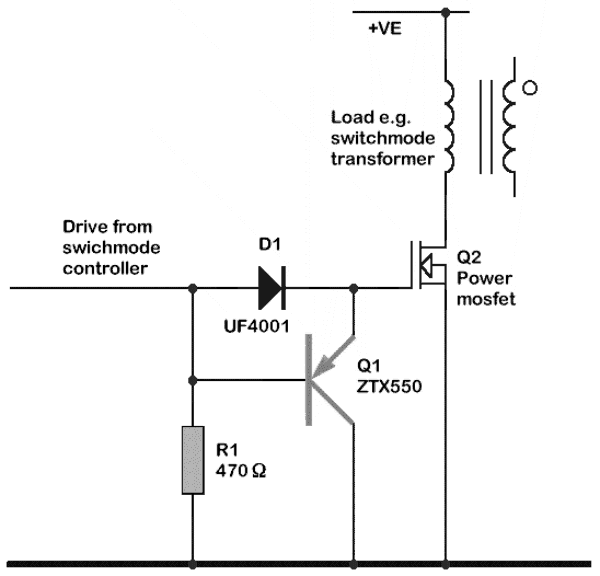

|
ETI online circuit tips |

In this circuit, the length of the output pulse is determined by the 10nF capacitor and the 220k resistor. This is true so long as the differentiated input signal voltage rises above the logic 0 level for the gate in a shorter time than the proper duration of the output pulse. The length of the input trigger pulse is not relevant, so long as it is long enough for the gate to respond.
An elaboration of this circuit could use a resistor in series with pin 12, in order to prevent the input protection diodes from limiting the maximum positive voltage of the waveform on the junction of the 220k resistor and the 10n capacitor. However, this would make pin 12 prone to noise pickup, and the circuit shown works well in most situations.

Fast switch-off of the mosfet in a flyback converter fast is often one of the most significant factors in keeping the efficiency of the converter high. During the switching time the power mosfet is conducting a lot of current, with a high voltage appearing across it. During this time, it is dissipating a lot of power. This adds to the heat sinking problem, and reduces the overall efficiency.
In addition to discharging the gate-source capacitance, it is also necessary to discharge the gate-drain capacitance. Here the problem is much greater, because it has to charge in the other direction as the drain voltage rises. Therefore the amount of charge involved in the gate-drain capacitance is normally much greater than that contributed by the gate-source capactance.
This circuit increases the gate discharge current capability. It also offers the advantage that it can be used to route part of the circulating current in a different path than via the control chip, if this will help reduce electromagnetic interference.
Switch on is usually much less of a problem, because the current is much lower, and the output cutrrent of the normal switrched mode control chip is normally sufficient to switch the mosfet fast enough that little further improvement in efficiency is possible.
To link to back issues, go via the home page
Copyright © 1998 A. S. and H. P. Armstrong